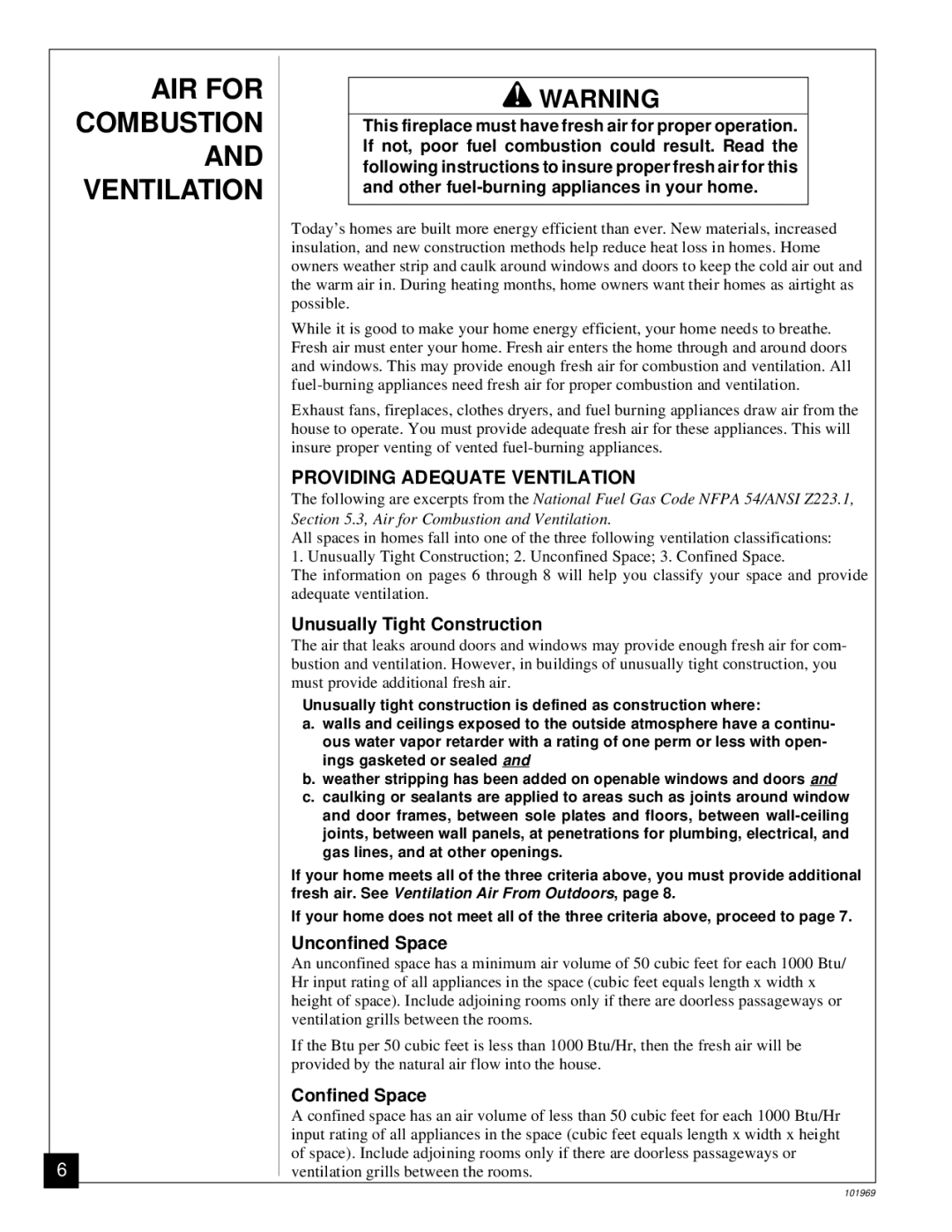UNVENTED (VENT-FREE) PROPANE GAS FIREPLACE specifications
Desa Unvented (Vent-Free) Propane Gas Fireplaces offer a unique and efficient way to provide warmth and ambiance to any living space, without the need for traditional venting systems. These fireplaces are designed to burn propane gas cleanly and efficiently, thus eliminating the need for chimneys or flues. One of the key features of the Desa Unvented propane gas fireplace is its ability to operate without exhausting combustion gases outside, making it an ideal choice for homeowners with limited installation options.Equipped with advanced safety features, these fireplaces come with oxygen depletion sensors that automatically shut off the unit if oxygen levels in the room decrease to unsafe levels. This ensures peace of mind for users, as safety is a top priority when it comes to heating solutions.
Energy efficiency is another significant aspect of the Desa Unvented propane gas fireplace. These units convert almost all of the fuel they burn into usable heat, which translates into lower energy bills and a smaller carbon footprint. The fireplaces also have adjustable flame settings, allowing users to customize their heating needs according to the room's size and desired warmth.
Aesthetic appeal is paramount in any home heating solution, and Desa offers a variety of styles and designs to suit different interior decors. Whether you prefer a classic look with ceramic logs and glowing embers or a contemporary clean-burning design, there is a model to meet your preferences. With remote control options available, users can easily adjust the heat and flame settings from the comfort of their couch.
Installation is hassle-free, as these units do not require complex venting. This flexibility allows homeowners to place the fireplace in various locations, ensuring that any room can benefit from the charm and warmth of a gas fire. With the additional option to incorporate a wall-mounted thermostat, users can maximize efficiency while maintaining the ideal room temperature.
In summary, the Desa Unvented propane gas fireplace combines safety, efficiency, and style, making it an attractive option for those looking to enhance their home environment. Its innovative technology and user-friendly features set it apart as a reliable and aesthetically pleasing heating solution.

